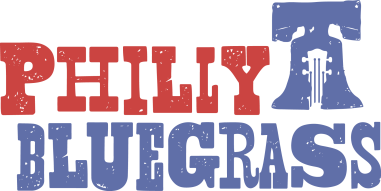Asheville, North Carolina’s Town Mountain releases their new, Dirk Powell-produced album on April 1, and visits famed Philadelphia listening room the Tin Angel on Sunday, April 10. Our Matt Thomas interviewed Jesse Langlais (banjo and vocals) about the new record, the creative process, and influences.

Photo credit: Sandlin Gaither
MT: Congrats on your upcoming album, Southern Crescent! How did you decide to go “old school” with the recording process, and did the end result live up to your expectations?
JL: Well, we perform live music and we thought it’s only fair to present that to our fans. We also love listening to and watching live music. There’s a certain element of community that goes along with roots music. It’s about being with friends and family, enjoying some food with one another, dancing, and playing music. For us it just made sense. That’s why we sought out one of the best roots musicians in the world, Dirk Powell, to be our engineer and producer.
MT: What’s it like being in a band with multiple songwriters? Do you collaborate at all, or is it more a situation where someone shows up with a finished product and everyone learns their parts?
JL: It’s great to have multiple songwriters. It makes us a more cohesive band if we feel we can all contribute artistically to an overall sound. We each have songwriters we collaborate with outside of the band. It’s not something that really happens within the band. However, you never know what the future may bring. We do all contribute to the arrangement of the song, which ultimately helps craft its direction. So, in a sense, we do collaborate together.
MT: What albums or artists are you listening to the most these days?
JL: Personally I’ve been listening to Chick Corea a lot. I’ve been listening to the new Larry Keel Experience album. I’m also in Mexico at the moment so I’ve been soaking up mariachi music and trying to find out about Mexican folk music such as Son Jarocho—which certainly shares elements with US folk music.
MT: One of your best-known songs is your excellent cover of Springsteen’s “I’m on Fire.” How did the decision to cover that song come about, and how do you go about putting your own spin on such a well-known tune?
JL: Robert came up with the idea and we’re glad he did. One day, in the van, he mentioned that it would work well in a bluegrass setting. He was right! Still to this day that song gets recognized. In fact, just last month it made The Atlantic‘s list of Most Transformative Cover Songs. If you, as a band, have your own unique sound then inherently it will have your “spin” on it. That’s all I can say to that. Aside from deciding to perform it and rearranging it a little, it just came out as it did.
MT: In your band bio, you seem to avoid calling yourselves a bluegrass band, but rather cite bluegrass as one of your influences. Do you consider yourselves bluegrass? What does “bluegrass” mean to you?
JL: Labels, schmabels. The music that a lot of us play, and I mean a lot, all comes from the same 12 notes. Jazz, bluegrass, rock, country, blues, adult contemporary easy listening… the list goes on. Yes, it is a conscious decision for us to not be corralled into one genre. We obviously LOVE bluegrass and collectively have listened to tens-of-thousands of-hours of it. But we have all spent equal amounts of time with other music. It certainly comes out in our collective sound so it’s not fair to just call us a “bluegrass” band. However, we certainly take pride in it when someone does. It’s hard to say what bluegrass means to me. It can mean Bill Monroe or it can mean a region in Kentucky or just real amazing music.
